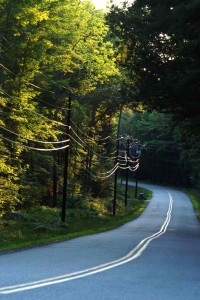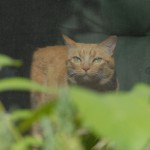Welcome to Captains Curious, a weekly series of guest posts on the subject of Curiosity. The newest contributing member is Connie Harryman! To learn about the other Captains Curious, please click here.
Curiosity is the essence of creativity
“Curiosity killed the cat.” I still laugh when I remember my Mom saying this to me. For me, curiosity has led me on my grand journey of becoming an acknowledged expert in creativity. For you see, curiosity is the essence of creativity. Without curiosity creativity and success would not exist.
Examples
I will give you several examples. When I was quite young, I lived in a tiny rural community in Texas. I had no role models and no experience beyond what occurred within a few short miles. However, my curiosity ate at me. What else is out there in that other world?
 I had no resources to explore that other world. However, because of my curiosity I developed an insatiable lust for reading. I especially loved historical novels set in far off exotic places. I was not allowed to read because it signified laziness. Due to my abiding curiosity I simply found hiding places where I could read.
I had no resources to explore that other world. However, because of my curiosity I developed an insatiable lust for reading. I especially loved historical novels set in far off exotic places. I was not allowed to read because it signified laziness. Due to my abiding curiosity I simply found hiding places where I could read.
It was this same drive of curiosity that led me to leave my community to go to college. What do they teach in those colleges? I had no idea but I knew they were filled with books and I knew books satisfied my curiosity.
After I graduated I was curious. What is it like to work in a shiny multistory building with all the walls covered with windows? My friends and even those who loved me told me that I was not meant for technology and I would not be any good at it so I should stay away from it. However, I was curious. Would I be any good at it? I would not know unless I tried. I spent the next several years working for the market leader in emerging technologies and I excelled. My curiosity was satisfied.
It didn’t stop there
I became aware of the field of creative thinking quite by accident. I was told, “You are the most creative person I know.” What does this mean? Surely this could not be true. After all I cannot sing, dance, or even memorize poetry. What is creativity? My curiosity is rising again. Where do you go to find out about creativity and what does creativity have to do with the practical things in life?
My curiosity is pulling at me. It must be satisfied. I decided to go to Austin to attend a conference sponsored by the American Creativity Association. The next year I was on the organizing team for the Singapore conference.
Do you remember my curiosity led me to read about exotic far off places when I was young? If you are curious about creativity in a far off place, then Singapore satisfied my curiosity completely. I travelled there and met my future business partner, Lars Ringe, founder of RobotLab. My curiosity led me to this creativity and innovation expert from Denmark.
Curiosity drives my passions
Let us now return to my passions. These include creativity and technology. I am curious. How can I take advantage of the power of social networking and social media to share knowledge about creativity and innovation? I am so curious I decided to take classes in social networking. Six months later, I was invited to be a professional guest blogger for the Front End of Innovation Europe held in Amsterdam. This is an event sponsored by the International Institute of Research. My curiosity led to me a rather terrifying and daunting situation but again I succeeded.
My curiosity led me to join many social networking groups. Many are focused on creativity and innovation but some are focused on science and technology or women in technology. My curiosity compels me to connect with fascinating people on Twitter and LinkedIn.
I continue to satisfy my curiosity about how to build creative teams and how to increase their performance. I wrote a white paper entitled Mastering Creative Problem Solving Within Teams and it was presented to the International Association of Science Parks by Lars Ringe, founder of RobotLab in Copenhagen, Denmark. I was to be the presenter but, alas, I had to attend my daughter’s wedding in Dublin, Ireland.
Rejoice in your curiosity and fulfill your dreams!
My curiosity has been my major driver leading me to many adventures in the world of creativity and innovation. For a joyful and passionate life, you must rejoice in your curiosity and satisfy it to find out what type of creative adventures you can embark upon to fulfill your dreams!
* * * * *
 Connie Harryman is CEO of Applied Concepts Creativity. She refers to herself as a Creativity Developer. She is also the President of the American Creativity Association – Austin Global. Her blog is http://developyourcreativethinking.com/ You are invited to connect with her on Twitter and LinkedIn.
Connie Harryman is CEO of Applied Concepts Creativity. She refers to herself as a Creativity Developer. She is also the President of the American Creativity Association – Austin Global. Her blog is http://developyourcreativethinking.com/ You are invited to connect with her on Twitter and LinkedIn.
* * * * *
To sign up for updates Click Here.
Would you like to submit a guest post on the subject of Curiosity? Send an email to susan {at} susanTblake {dot} com with the subject line: Captains Curious.
Image: graur razvan ionut / FreeDigitalPhotos.net






 Twitter
Twitter LinkedIn
LinkedIn Facebook
Facebook